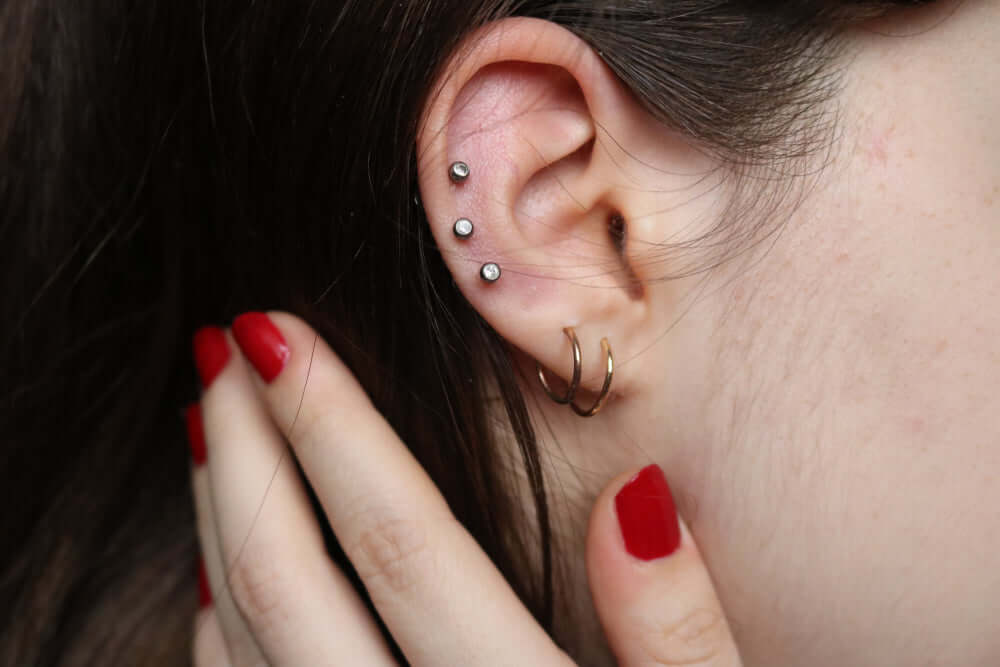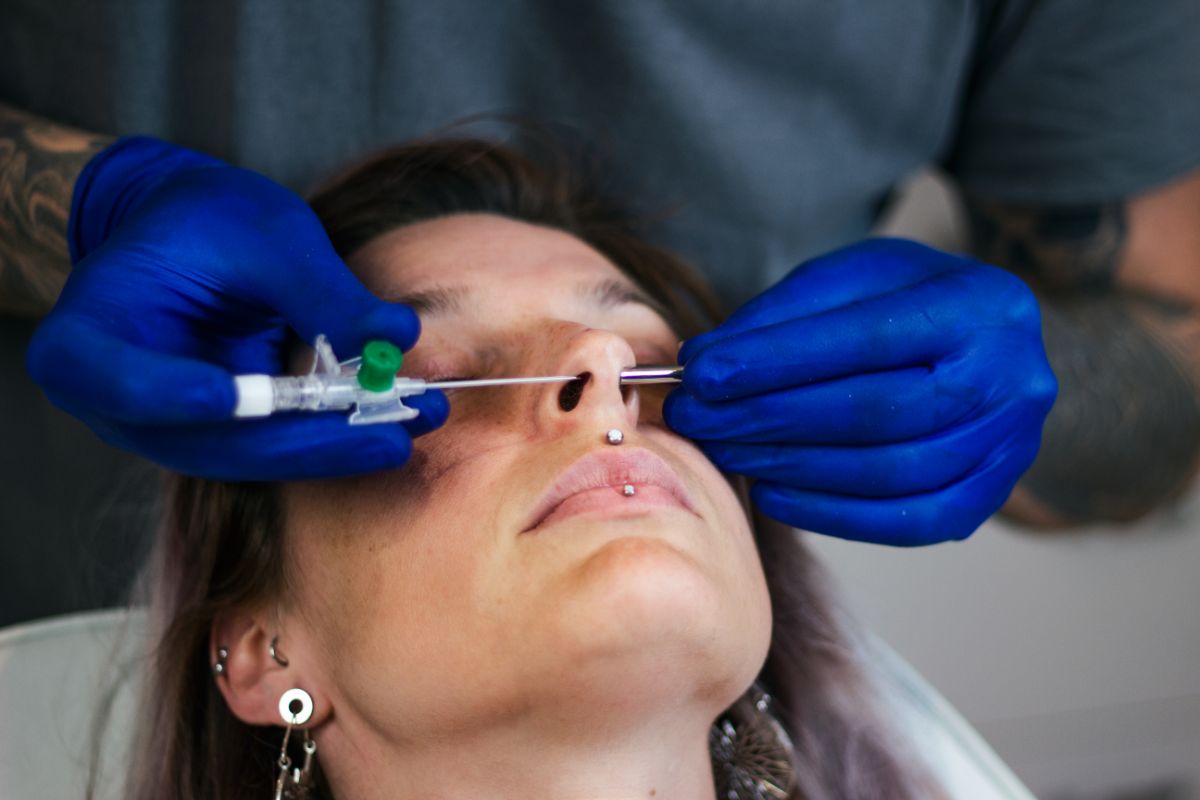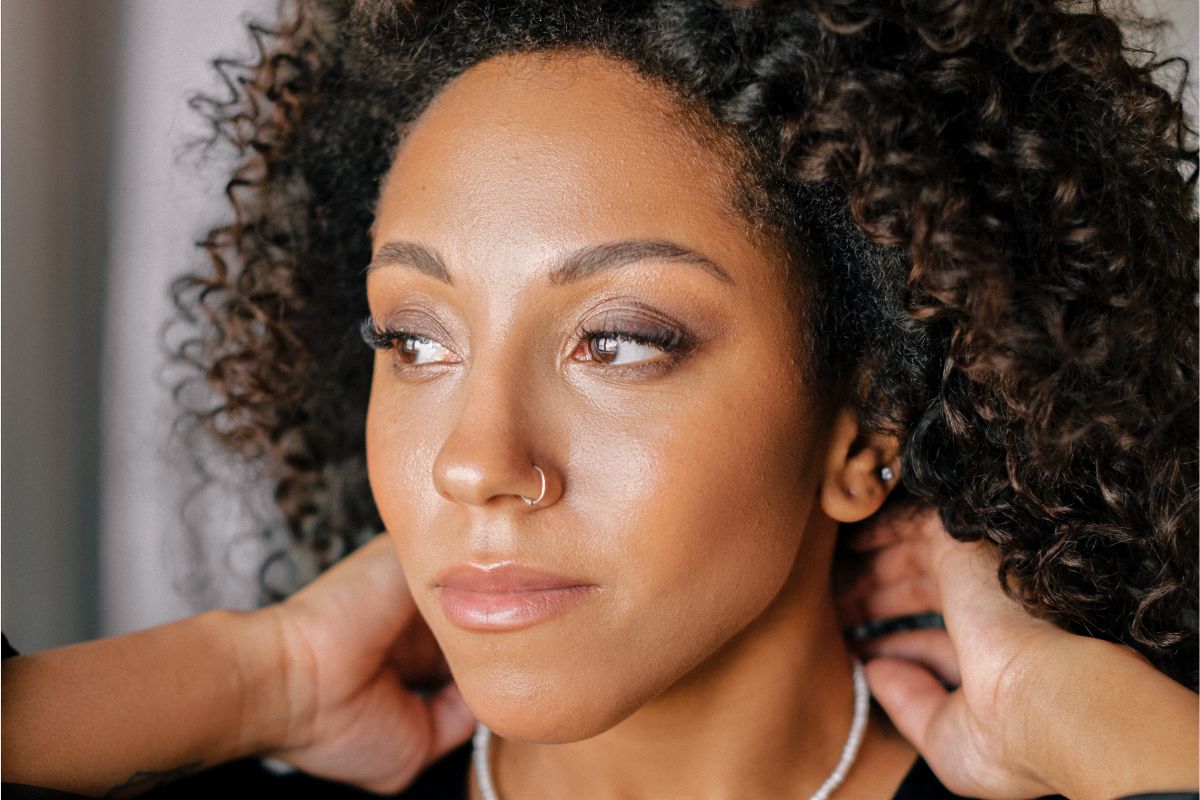Many of us can relate to the exhilaration of getting a new piercing. There’s actually scientific research to show that the sensation that accompanies body piercings releases endorphins in the brain.
However, while the initial sting of getting pierced can deliver an adrenaline rush, most pierced people can agree that the soreness that comes with the healing process is much less fun.
What’s more, waiting for a piercing to heal can be frustrating because there are limitations on what you can and can’t do during the healing process. For example, activities like swimming and jewelry changes are not recommended while a piercing is still healing.

Luckily, depending on the location of the piercing, there are steps you can take to make your new body modification heal faster.
How Can I Make My Lobe Piercing Heal Faster?
The most common type of piercing is the good old-fashioned lobe piercing. These are typically the first and sometimes the only piercings that people get, and they’re also some of the easiest to heal.
On average, the expected healing time for a lobe piercing is six weeks, but some people’s lobe piercings will heal within a month, while others may take as long as eight weeks. To learn more about lobe piercings, read here.
Since ear lobes aren’t typically a problematic area for healing, the steps you can take to encourage faster healing are pretty basic in terms of general piercing aftercare.
Keep your hands off your piercings as much as possible while it’s healing. If you must touch them, make sure to wash your hands first.
The general advice is to use saltwater or saline solution for about 5 minutes, at least twice a day. We recommend the Dr. Piercing Aftercare Solution, which comes in swab-form and consists of an isotonic saline solution alongside anti-inflammatory, antiseptic, and B-Vitamin ingredients.
To avoid irritating your lobe piercings during the night, try your best to sleep on your back as opposed to on your side. This can be difficult if you’re normally a side sleeper, but it will help keep bacteria out of your piercings.
How Can I Make My Cartilage Piercing Heal Faster?
Cartilage piercings are another common form of ear piercing. Unlike lobe piercings, these piercings go through the tougher part of your ear, around the side.
These piercings take longer to heal, with an average healing time of anywhere between 4 months and a year.
The best step you can take to ensure your cartilage piercing heals quickly is one you can take before the piercing is even done, and that’s to make sure your piercing is done with a needle and not a gun. Piercing guns can shatter cartilage, causing prolonged healing times.
Additionally, avoid getting 2 cartilage piercings done at once. The increased trauma at the site can cause both piercings to lag in terms of healing.
Once the piercing is complete, apply the same rules as you would with a lobe piercing. Bathe the area in saline solution at least twice each day and try not to sleep on the pierced ear at night.
With cartilage piercings, it’s extra important to avoid baths and swimming, especially during the first few months.
How Can I Make My Helix Piercing Heal Faster?
Helix piercings are also technically cartilage piercings, except that they’re exclusively located towards the top of the ear as opposed to down the sides. These piercings typically heal within 3 to 6 months.
The same rules apply to helix piercings as to other cartilage piercings: turn down the gun in favor of the needle and sick to a single piercing in this area for the time being.
Twice-daily saline swabs, and fresh pillowcases go a long way towards speeding up the healing times.
Since the helix is particularly likely to come into contact with bacteria through contact with (or catching in) hair, it’s also more likely to get inflamed. If this happens, an anti-inflammatory product like Emu Oil can help to get your healing back on track. Just make sure that the product is unscented and doesn’t contain any other ingredients. Alternatively, anti-inflammator aloe vera is included in the Dr. Piercing Aftercare Solution.
How Can I Make My Ear Piercing Heal Faster?
Outside of lobe, helix, and cartilage, there are several other types of piercings that come under the umbrella of ear piercings.
Some examples are daith, rook, tragus, and industrial piercings.
Tragus, daith, and rook piercings all go through small areas of cartilage on the inside of the ear. Therefore, while all the same tips about saline swabbing twice a day and keeping the area clean still apply, they require a little bit of extra care because they’re in such a sensitive area.
If you want your rook, tragus, or daith piercing to heal faster, avoid wearing earphones since these will rub against your piercing and introduce bacteria to the site.
For an industrial piercing, which goes diagonally through both sides of the upper ear cartilage, remember to clean both piercings outside and inside each time. Again, try not to sleep on the pierced ear and avoid over-ear headphones and sunglasses.
How Can I Make My Nose Piercing Heal Faster?
Nose piercings usually heal within 4 to 6 months, although septum piercings heal more quickly at roughly 2 to 3 months.
To encourage this piercing to heal faster, clean with saline solution morning and night. Be gentle when blowing your nose, and if you wear glasses, do your best to stop them from sliding down against the piercing.
How Can I Make My Lip Piercing Heal Faster?
Lip piercings can be tricky to heal because we move our mouths so much on a daily basis. Our mouths are also exposed to a lot of bacteria through eating and drinking.
Therefore, you may need to saline-treat your lip piercing more often than other piercings: at least 3 times a day.
The most effective way to speed up your lip piercing’s healing is to avoid anything that might irritate it. Unfortunately, this can mean not talking unnecessarily during the first few weeks and refraining from activities like kissing. (Sorry!) If you follow this advice, though, you stand a good chance of your lip piercing being healed within 6 weeks.
How Can I Make My Eyebrow Piercing Heal Faster?
Eyebrow piercings take 6 to 8 weeks to heal on average. The thin skin of the eyebrow is sensitive, so the key to fast healing with this piercing is gentleness.
Use saline solution on the area in the morning and evening, and try to only use unscented, natural skincare products during the healing time. Soap and shampoo residue can often remain trapped in the eyebrows after a shower, so make sure to rinse thoroughly to avoid product buildup in this sensitive area.
Final Thoughts
Ultimately, the key to helping your piercing to heal faster is a strict cleanliness regimen.
All of the piercings listed above should be soaked in saltwater or saline solution twice a day or more. Anything that could introduce bacteria to the site should be avoided.
Should mild inflammation occur, a natural anti-inflammatory like the aloe vera in Dr. Piercing Aftercare can be applied. However, in case of infection or serious inflammation, seek the advice of your piercer or a medical professional as soon as possible.
Generally speaking, Vitamin B and Zinc supplements can help to speed up healing, but these should not be relied upon in lieu of proper cleaning. Instead, choose a saline product that contains Vitamin B, like Dr. Piercing Aftercare.





